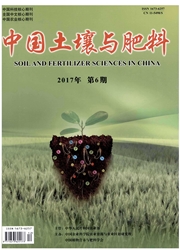

 中文摘要:
中文摘要:
选择南京的菜地、公园绿地和道路土壤作为研究对象,测定其总有机碳(OC)、总氮(TN)、总磷(TP)、有机磷(OP)等指标,分析了城市人类活动影响下土壤碳、氮、磷的生态化学计量学特征。结果如下:(1)城市土壤全剖面OC、TP含量均为道路>菜地≈绿地,TN为菜地>道路≈绿地,OP为菜地>道路>绿地,OC∶TN为菜地<绿地<道路,OC∶TP为道路<菜地≈绿地,TN∶TP为道路<绿地≈菜地,OC∶OP为菜地<绿地≈道路,TN∶OP为菜地<道路≈绿地,表明不同的土地利用方式会对城市土壤碳、氮、磷的化学计量学特征产生不同的影响;(2)与中国和世界非城市土壤的平均水平相比,南京城市土壤碳、氮、磷比例严重失衡;(3)对于不同利用方式的城市土壤,其碳、氮、磷含量对相应化学计量比的影响是不同的。
 英文摘要:
英文摘要:
It is important for eco city construction and global change to apply the stoichiometry in urban soil systems.Soils from vegetable land,green land,and road in urban Nanjing were sampled,and soil organic carbon (OC),total nitrogen (TN),total phosphorus (TP) were tested,soil C∶N∶P stochiometry were discussed.The results showed that:(1) The order of soil OC,TP or IP content was road〉vegetable land≈ green land,TN content was vegetable land〉road ≈green land,OP content was vegetable land〉road〉green land,and the order of OC∶TN ratio was vegetable land〈green land〈road,OC∶TP ratio was road〈vegetable land≈ green land,TN∶TP ratio was road〈green land≈ vegetable land,OC∶OP ratio was vegetable land〈green land ≈road,TN∶OP ratio was vegetable land〈road≈ green land,and OP∶IP ratio was road〈green land〈vegetable land for whole profile,which indicated that land use would affect the C∶N∶P stoiciometry of urban soil.(2) Compared to Chinese and global average of non-urban soil,the balance of C,N,and P in urban soils was destroyed,legumes could be planted to improve the overall balance.(3) Although the C,N and P content was the basis of C∶N∶P,the effects of soil carbon,nitrogen,and phosphorus on C∶N∶P stoichiometry was different under different land use.
 同期刊论文项目
同期刊论文项目
 同项目期刊论文
同项目期刊论文
 Distribution and migration of heavy metals in undisturbed forest soils: A high resolution sampling m
Distribution and migration of heavy metals in undisturbed forest soils: A high resolution sampling m 期刊信息
期刊信息
